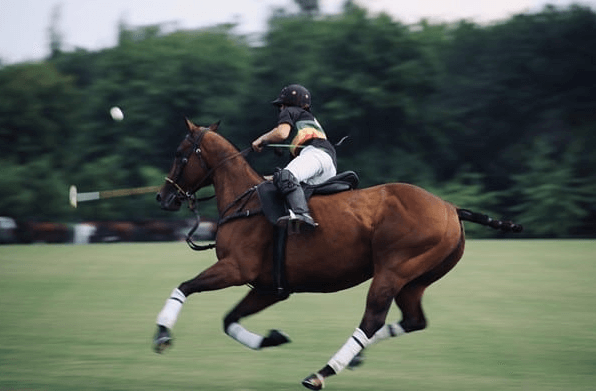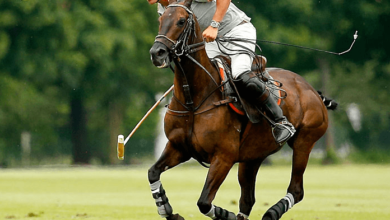How many players are on each polo team?

The Basics of Polo
Polo, often referred to as “The Sport of Kings,” boasts a rich history that dates back over two millennia, originating from ancient Persia. It’s a game that combines strategy, speed, and skill, played on horseback where the objective is to score goals by hitting a small ball into the opposing team’s goal using a long-handled mallet. The basic rules of polo have evolved, yet the essence remains a team sport that requires both human and equine athletes to work in seamless harmony. The gear and equipment are specialized, ensuring both player safety and peak performance.
Composition of Polo Teams
A standard outdoor polo team comprises four players, each assuming a distinct role and position on the field. The positions are numbered from one to four, with each having specific responsibilities:
- The Number One Position: Primarily offensive, focusing on scoring goals.
- The Number Two Position: Also offensive but plays more aggressively, often taking on the opposing team’s defenders.
- The Number Three Position: The tactical leader, often considered the best player on the team, balances defense and attack.
- The Number Four Position: Mainly defensive, preventing the opposing team from scoring and clearing the ball from the goal area.
Variations in Team Size
While the traditional outdoor polo game consists of four players per team, variations like Arena Polo and Snow Polo alter team sizes for different settings. Arena Polo, played on a smaller field, typically features three players per team, while Beach and Snow Polo can vary depending on the specific rules of the tournament.
Training for Polo
Polo players undergo rigorous training to master the game’s physical and strategic aspects. Skill development includes riding, mallet handling, and understanding game tactics. Physical fitness is crucial, as players must maintain high endurance levels and strength to compete effectively.
The Importance of Teamwork
Teamwork is the cornerstone of success in polo. Effective communication and strategic plays define the game’s flow and outcome. Teams that excel in working together, leveraging each player’s strengths, often dominate the field.
Famous Polo Teams
Throughout history, notable polo teams have left their mark on the sport, achieving legendary status through their victories and contributions to polo’s global popularity. These teams, often comprised of exceptional players, have inspired countless individuals to take up and support polo.
Polo Leagues and Tournaments
Polo is celebrated worldwide, with leagues and tournaments offering teams the chance to compete at various levels. Prestigious competitions, such as the Argentine Open Polo Championship, draw global attention, showcasing the sport’s elite talent.
The Future of Polo Teams
The sport of polo continues to evolve, with innovations in play, equipment, and horse breeding enhancing the game. Its growing popularity is testament to polo’s enduring appeal and the exciting prospects for future teams.
How Many Players Are on Each Polo Team?
To directly answer the question: in traditional outdoor polo, each team has four players. However, variations in the game can see teams of three to four players, depending on the specific format being played.
Gearing Up for Polo
Choosing the right equipment is essential for any polo player, from mallets tailored to individual playing styles to the selection and training of polo ponies, which are integral to a player’s success on the field.
Polo Around the World
Polo’s global footprint reveals a sport that transcends cultural and geographical boundaries, adapting unique regional characteristics while maintaining its core principles.
Starting a Polo Team
Forming a polo team involves gathering a group of dedicated players, securing well-trained horses, and committing to the rigorous training necessary to compete. Coaching and strategic development are vital components of a team’s success.
FAQs
- How long does a typical polo match last? A standard match is divided into chukkas or periods, lasting 7 minutes each, with a typical game consisting of 4 to 6 chukkas.
- What equipment is essential for playing polo? Essential gear includes a polo mallet, helmet, boots, knee guards, and, of course, a suitable horse equipped with a saddle, bridle, and polo wraps.
- Can anyone start playing polo? Yes, polo welcomes enthusiasts of all ages and backgrounds. While it requires commitment and resources, clubs often offer lessons and lease horses to beginners.
- What’s the best way to learn polo? Joining a polo club and taking lessons from experienced instructors is the most effective way to learn the sport.
- How are polo horses trained? Polo ponies undergo specialized training to develop agility, speed, and responsiveness, with a focus on building a strong bond with their riders.
- Where is polo most popular? Polo enjoys popularity in numerous countries, with Argentina, the UK, and the US being notable hotspots for high-level competition.
Conclusion
The dynamic world of polo offers a fascinating blend of history, athleticism, and teamwork. Understanding the composition and roles within a polo team provides a window into the strategic depth of this esteemed sport. Whether you’re a seasoned player, an aspiring enthusiast, or simply a spectator, the game of polo promises a captivating experience rooted in tradition yet evolving with each match.

